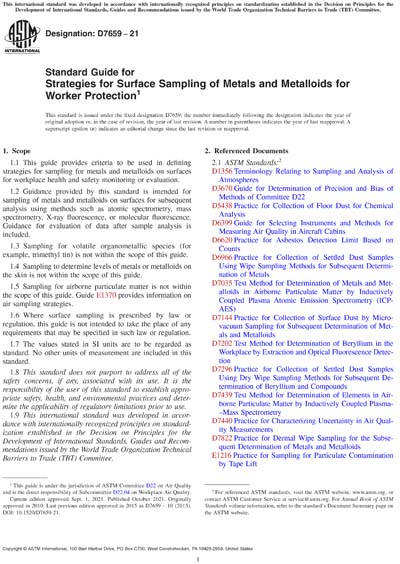Most recent
ASTM D7659-21
Standard Guide for Strategies for Surface Sampling of Metals and Metalloids for Worker Protection
1.1This guide provides criteria to be used in defining strategies for sampling for metals and metalloids on surfaces for workplace health and safety monitoring or evaluation.
1.2Guidance provided by this standard is intended for sampling of metals and metalloids on surfaces for subsequent analysis using methods such as atomic spectrometry, mass spectrometry, X-ray fluorescence, or molecular fluorescence. Guidance for evaluation of data after sample analysis is included.
1.3Sampling for volatile organometallic species (for example, trimethyl tin) is not within the scope of this guide.
1.4Sampling to determine levels of metals or metalloids on the skin is not within the scope of this guide.
1.5Sampling for airborne particulate matter is not within the scope of this guide. Guide E1370 provides information on air sampling strategies.
1.6Where surface sampling is prescribed by law or regulation, this guide is not intended to take the place of any requirements that may be specified in such law or regulation.
1.7The values stated in SI units are to be regarded as standard. No other units of measurement are included in this standard.
1.8This standard does not purport to address all of the safety concerns, if any, associated with its use. It is the responsibility of the user of this standard to establish appropriate safety, health, and environmental practices and determine the applicability of regulatory limitations prior to use.
1.9This international standard was developed in accordance with internationally recognized principles on standardization established in the Decision on Principles for the Development of International Standards, Guides and Recommendations issued by the World Trade Organization Technical Barriers to Trade (TBT) Committee.
ASTM International [astm]

